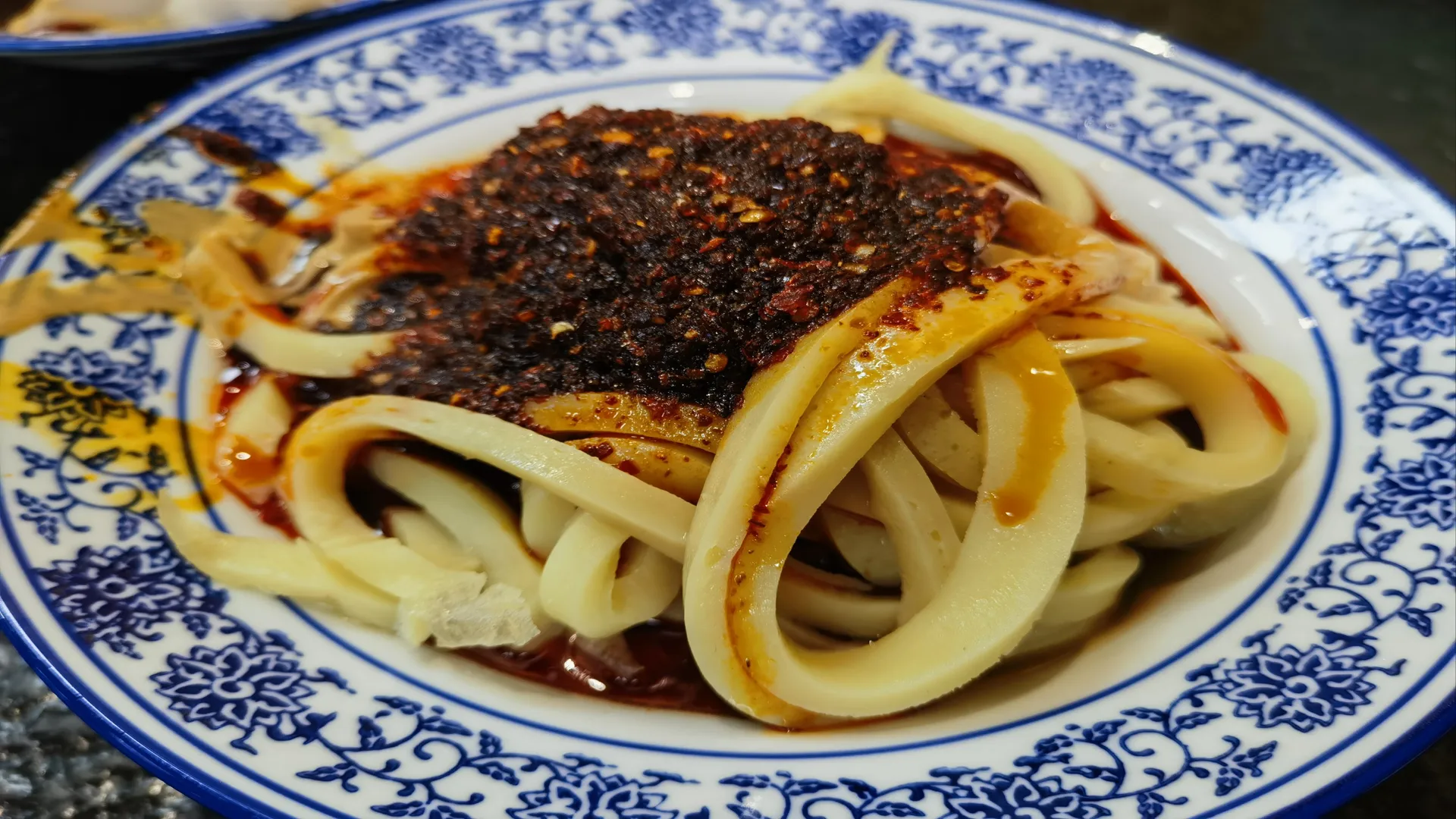The Art of Lanzhou’s Niangpi: A Culinary Journey Through Gansu’s Heritage
As a food connoisseur and practitioner, I am thrilled to delve into the intricacies of Lanzhou’s renowned Niangpi, a dish that is not only a staple in Gansu Province but also a symbol of its rich culinary heritage. Niangpi, also known as “high-pole Niangpi,” is a traditional cold dish that has been a part of the local diet for centuries, reflecting the region’s agricultural roots and the ingenuity of its people.
**Origin and Cultural Background:**
The origins of Niangpi can be traced back to the Han Dynasty, where it was a simple food made from wheat flour, a crop that thrived in the fertile lands of Gansu. Over time, it evolved into a dish that is now synonymous with the region, embodying the spirit of resilience and adaptability of the people of Lanzhou.
**Ingredients and Preparation:**
The making of Niangpi is a labor of love, requiring patience and skill. The primary ingredient is wheat flour, which is mixed with water to form a dough. The dough is then kneaded and washed for a grueling 8 hours to separate the gluten from the starch, a process that is integral to the dish’s unique texture. This arduous task results in a chewy, elastic gluten known as “mianjin,” which is a delicacy in itself. The starch is then used to create the Niangpi, which is cooked and cooled to create a firm yet supple sheet.
**Taste and Texture:**
The Niangpi itself is characterized by its grayish-white color and its soft yet resilient texture. It has a neutral flavor that pairs perfectly with the robust sauces and condiments that accompany it. The dish is typically dressed with a blend of sesame paste (majiang), vinegar, and a fiery chili oil (lazhi), which together create a symphony of flavors that is both comforting and invigorating.
**Visual Description:**
A well-prepared Niangpi is a sight to behold. The sheets of Niangpi are cut into wide strips, revealing a slightly translucent and smooth surface. They are arranged artfully on a plate, often with a generous topping of mianjin, which adds an extra layer of texture and depth. The vibrant colors of the sesame paste and chili oil create a visually striking contrast against the pale Niangpi, making it an appetizing dish that is as pleasing to the eye as it is to the palate.
**Representative Dishes and Cuisine:**
Niangpi is a versatile ingredient that can be used in a variety of dishes. In Lanzhou, it is often served as a standalone dish, allowing its unique qualities to shine. However, it can also be incorporated into other dishes, such as cold noodles or mixed with other vegetables for a refreshing salad. One of the most iconic ways to enjoy Niangpi is in the form of “Wuwei Mianpi,” which is characterized by its tangy, sour flavor that is both appetizing and invigorating.
**Culinary Characteristics:**
What sets Niangpi apart is its balance of textures and flavors. The chewy Niangpi and the springy mianjin provide a satisfying mouthfeel, while the condiments offer a bold and complex taste. The dish is a testament to the culinary traditions of Gansu, embodying the essence of the region’s cuisine with its simplicity and depth.
In conclusion, Niangpi is more than just a dish; it is a cultural treasure that has been passed down through generations. As a市级非遗技艺 (municipal-level intangible cultural heritage), it represents the culinary prowess and the cultural identity of Lanzhou. For those who have the privilege of tasting this delicacy, it is an experience that captures the heart of Gansu’s food culture in every bite.
